Archive for December, 2010
-
Bengal Tiger Facts
Posted in Wildlife A-Z | December 30, 2010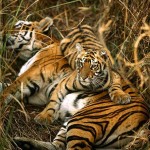 The tiger is said to come from the same family as that of the cats. It is the largest of all the wild cats in the world. Among all of the subspecies of the tiger that are found in the world, the Bengal tiger is said to be the second largest, with the Siberian tiger being the largest. Given the fact that these royal creatures are found most commonly in India, they are often called the Indian Bengal tiger. These subspecies are said to be found in Bhutan, Nepal, Myanmar, Tibet and Bangladesh. The Bengal Tiger facts include information about the unique characteristics of this magnificent animal. Bengal Tiger Facts: The Bengal tiger is best known for the way it looks. That is one extremely attractive looking animal. The reddish orange base with [...]
The tiger is said to come from the same family as that of the cats. It is the largest of all the wild cats in the world. Among all of the subspecies of the tiger that are found in the world, the Bengal tiger is said to be the second largest, with the Siberian tiger being the largest. Given the fact that these royal creatures are found most commonly in India, they are often called the Indian Bengal tiger. These subspecies are said to be found in Bhutan, Nepal, Myanmar, Tibet and Bangladesh. The Bengal Tiger facts include information about the unique characteristics of this magnificent animal. Bengal Tiger Facts: The Bengal tiger is best known for the way it looks. That is one extremely attractive looking animal. The reddish orange base with [...] -
Clouded Leopard Of Borneo
Posted in Wildlife A-Z | December 23, 2010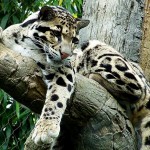 The first ever person to describe the clouded leopard was Sir Stamford Raffles. However, Griffith was the first person to give this creature a scientific name. The elusive animal is rarely seen. If you speak to anyone who has seen the animal, they’d describe it as having the skull and definition of the big cats, but having the body of a smaller cat. The adult clouded leopard will be the size of a small leopard; and will have a longer body and tail, when compared to the short legs. The coat is generally said to be rich yellowish in color or could be an earthy brown. The name of this animal comes from the blotchy cloudlike marks that cover its body. Their long tails help as counterbalances when these animals have to climb trees. Although these [...]
The first ever person to describe the clouded leopard was Sir Stamford Raffles. However, Griffith was the first person to give this creature a scientific name. The elusive animal is rarely seen. If you speak to anyone who has seen the animal, they’d describe it as having the skull and definition of the big cats, but having the body of a smaller cat. The adult clouded leopard will be the size of a small leopard; and will have a longer body and tail, when compared to the short legs. The coat is generally said to be rich yellowish in color or could be an earthy brown. The name of this animal comes from the blotchy cloudlike marks that cover its body. Their long tails help as counterbalances when these animals have to climb trees. Although these [...] -
Asiatic Lion – Endangered Big Cat
Posted in Wildlife A-Z | December 21, 2010 When it comes to the regal animals of the earth, the Asiatic Lion is one subspecies of the Lion’s extant that comes to mind. These animals are relatively smaller than their African cousins. The one difference that is noticeable will be the fact that there is a fold of skin that runs down the belly of the Asian lion, which is not really present in the case of African lions. Measuring Up: The adult lion can reach a measure of up to about 8 feet in body and head length. Their tails along can reach a measure of about 3 feet. The females are smaller than their male counterparts. While the male lions can weigh up to about 550 lb, the females might go up to about 400 lb. Furry Big Cats: The fur on these magnificent animals is tan in color; and this [...]
When it comes to the regal animals of the earth, the Asiatic Lion is one subspecies of the Lion’s extant that comes to mind. These animals are relatively smaller than their African cousins. The one difference that is noticeable will be the fact that there is a fold of skin that runs down the belly of the Asian lion, which is not really present in the case of African lions. Measuring Up: The adult lion can reach a measure of up to about 8 feet in body and head length. Their tails along can reach a measure of about 3 feet. The females are smaller than their male counterparts. While the male lions can weigh up to about 550 lb, the females might go up to about 400 lb. Furry Big Cats: The fur on these magnificent animals is tan in color; and this [...] -
Blackpool Zoo Has Aged Beautifully
Posted in Europe | December 16, 2010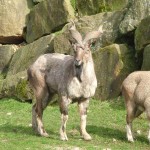 The Blackpool zoo is one zoo that I know has definitely come of age. It was set up in the year 1972, by the Blackpool Council. In today’s age and date, it is owned by Parques Reunidos. Located just a couple of miles off the sea-front of Blackpool; this zoological garden boasts of about 1500 exotic animals. This is far cry from the original herd of about 12 animals that the officials began with. The zoo sits close to the Stanley Park and is said to boast of an extremely esteemed collection of reptiles, animals and even exotic birds. Dinosaur Safari: This is perhaps one of the biggest and unique-most selling points of the Blackpool Zoo. This safari ride will take you back into history and let you take a peek at how that memorable era went by [...]
The Blackpool zoo is one zoo that I know has definitely come of age. It was set up in the year 1972, by the Blackpool Council. In today’s age and date, it is owned by Parques Reunidos. Located just a couple of miles off the sea-front of Blackpool; this zoological garden boasts of about 1500 exotic animals. This is far cry from the original herd of about 12 animals that the officials began with. The zoo sits close to the Stanley Park and is said to boast of an extremely esteemed collection of reptiles, animals and even exotic birds. Dinosaur Safari: This is perhaps one of the biggest and unique-most selling points of the Blackpool Zoo. This safari ride will take you back into history and let you take a peek at how that memorable era went by [...] -
Big Cats Rescue Conducted By PrideRock Wildlife Refuge
Posted in North America | December 14, 2010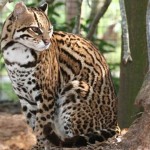 PrideRock Wildlife Refuge is located in Kaufman County, Texas; and sits on a comfortable 9 acres of land that is located about 30 miles east of Dallas. It is a nonprofit organization that is said to have helped out with the big cats rescue and has been doing that for a while now. Learn more about them. About PrideRock: According to anyone and everyone who’s visited PrideRock or been part of their voluntary activities, the place is a safe haven for Big Cats who may have been abandoned, abused or confiscated. The big cats rescue operations conducted by the family of PrideRock is a commendable job in itself. Most of these animals were no longer being cared for by their previous owners; and this could have been the case for a number of reasons. [...]
PrideRock Wildlife Refuge is located in Kaufman County, Texas; and sits on a comfortable 9 acres of land that is located about 30 miles east of Dallas. It is a nonprofit organization that is said to have helped out with the big cats rescue and has been doing that for a while now. Learn more about them. About PrideRock: According to anyone and everyone who’s visited PrideRock or been part of their voluntary activities, the place is a safe haven for Big Cats who may have been abandoned, abused or confiscated. The big cats rescue operations conducted by the family of PrideRock is a commendable job in itself. Most of these animals were no longer being cared for by their previous owners; and this could have been the case for a number of reasons. [...] -
Frilled Shark Or Sea Serpent?
Posted in Wildlife A-Z | December 9, 2010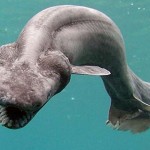 The name ‘frilled shark’ seems almost oxymoronic. The name, by itself, seems capable of conjuring up images of a fluffy little creature that will wag its fins. If that really is your version of this creature, you’re not far from wrong; but you’re definitely not close to right either. This creature is close to the shape of an eel, and is sometime even mistaken for an eel. Not so harmless, you say! But wait till you hear more. The one distinguishing characteristic of this creature is its six gill slits. Do you know what that’s equivalent to? If there had ever been a ‘hell’s angel’ tattoo for sea creatures, it would have been in the form of six gill slits. This creature is so weird in its appearance that a number of cryptologists [...]
The name ‘frilled shark’ seems almost oxymoronic. The name, by itself, seems capable of conjuring up images of a fluffy little creature that will wag its fins. If that really is your version of this creature, you’re not far from wrong; but you’re definitely not close to right either. This creature is close to the shape of an eel, and is sometime even mistaken for an eel. Not so harmless, you say! But wait till you hear more. The one distinguishing characteristic of this creature is its six gill slits. Do you know what that’s equivalent to? If there had ever been a ‘hell’s angel’ tattoo for sea creatures, it would have been in the form of six gill slits. This creature is so weird in its appearance that a number of cryptologists [...] -
Triops – Shrimps Of The Dinosaur Age
Posted in Wildlife A-Z | December 7, 2010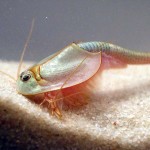 There is so much that is fascinating about triops. The name triops comes from the Greek phrase that means ‘three eyes’; and on closer inspection you will realize that the triops do boast of having three eyes. Given the fact that they date back to the ages of the dinosaur, they are also nicknamed the dinosaur shrimps. Ideally, the triop is a crustacean and are known to appear like miniature versions of the horseshoe crab. The larger members of the crustacean family would include your lobsters and crabs. The smaller members would be the fairy shrimp, brine shrimp and daphnia. The triop has a relatively short life span and will not generally outlive the 90 days mark. Some of them will perish at the end of 20 days. They will quickly grow to [...]
There is so much that is fascinating about triops. The name triops comes from the Greek phrase that means ‘three eyes’; and on closer inspection you will realize that the triops do boast of having three eyes. Given the fact that they date back to the ages of the dinosaur, they are also nicknamed the dinosaur shrimps. Ideally, the triop is a crustacean and are known to appear like miniature versions of the horseshoe crab. The larger members of the crustacean family would include your lobsters and crabs. The smaller members would be the fairy shrimp, brine shrimp and daphnia. The triop has a relatively short life span and will not generally outlive the 90 days mark. Some of them will perish at the end of 20 days. They will quickly grow to [...] -
Australian Lizard Moves From Egg Laying To Birth Giving
Posted in News | December 2, 2010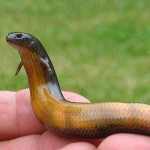 This is perhaps an example of evolution being caught in the act. Scientists are baffled by the fact that one species of the Australian lizard that used to lay eggs has now abandoned the act. It is now giving live births. The yellow-bellied and three-toed skin is said to be found around the warm coastal lowland areas around New South Wales. They have always been known to lay eggs in order to reproduce. However, a startling revelation has been that the giving birth to its young ones. There have been only two other modern reptiles who have been capable of this phenomenon. This would include another species of skin and a lizard from Europe. According to records maintained about species evolution, it has been seen that almost a hundred lineages [...]
This is perhaps an example of evolution being caught in the act. Scientists are baffled by the fact that one species of the Australian lizard that used to lay eggs has now abandoned the act. It is now giving live births. The yellow-bellied and three-toed skin is said to be found around the warm coastal lowland areas around New South Wales. They have always been known to lay eggs in order to reproduce. However, a startling revelation has been that the giving birth to its young ones. There have been only two other modern reptiles who have been capable of this phenomenon. This would include another species of skin and a lizard from Europe. According to records maintained about species evolution, it has been seen that almost a hundred lineages [...] -
Zoo History – Ancient Egyptians And Their Zoos
Posted in Wildlife A-Z | December 1, 2010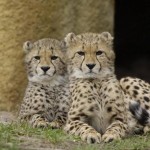 Ever wondered about the concept of zoo history? Where do you think was the first ever zoo of the world? Who ran it? What animals found shelter there? Zoo History And Egypt: There are reports and studies conducted that suggest that a lot of the wealthy Egyptians used to like to have a garden or a fishpond where they’d house giraffes, waterfowls, elephants and even bears. Sometimes, these wild animals were also tamed and kept as pets. This is said to be true of the case of the lion that belonged to Ramses II. It was said to go into battle with him. The Egyptians also had a penchant for collecting exotic animals, chickens, rhinos, ostriches, etc. Some of these animals had been indigenous to the country at an earlier date, but weren’t found [...]
Ever wondered about the concept of zoo history? Where do you think was the first ever zoo of the world? Who ran it? What animals found shelter there? Zoo History And Egypt: There are reports and studies conducted that suggest that a lot of the wealthy Egyptians used to like to have a garden or a fishpond where they’d house giraffes, waterfowls, elephants and even bears. Sometimes, these wild animals were also tamed and kept as pets. This is said to be true of the case of the lion that belonged to Ramses II. It was said to go into battle with him. The Egyptians also had a penchant for collecting exotic animals, chickens, rhinos, ostriches, etc. Some of these animals had been indigenous to the country at an earlier date, but weren’t found [...]


